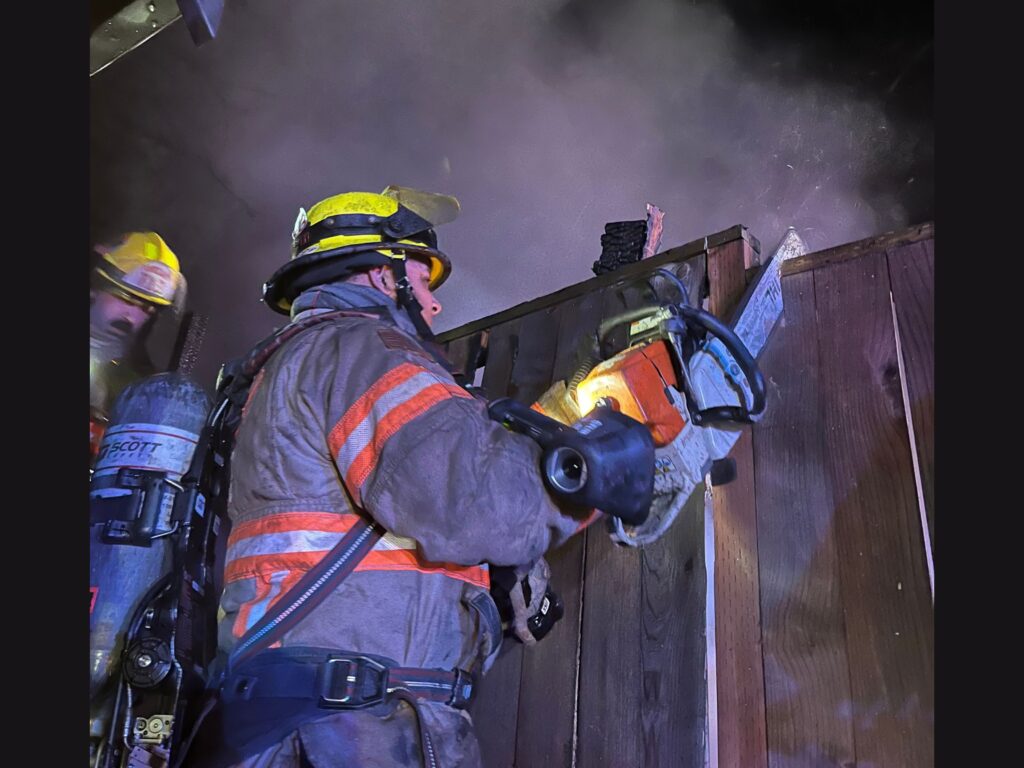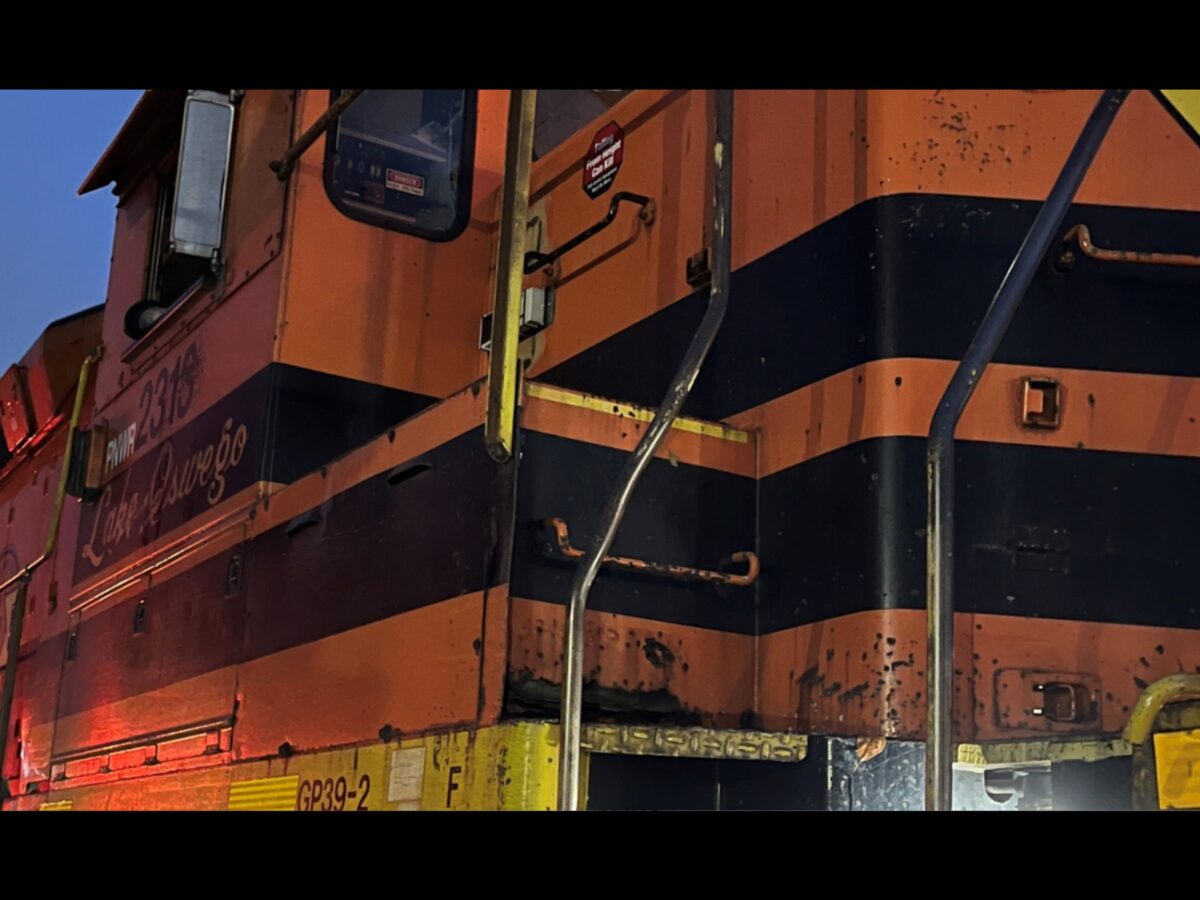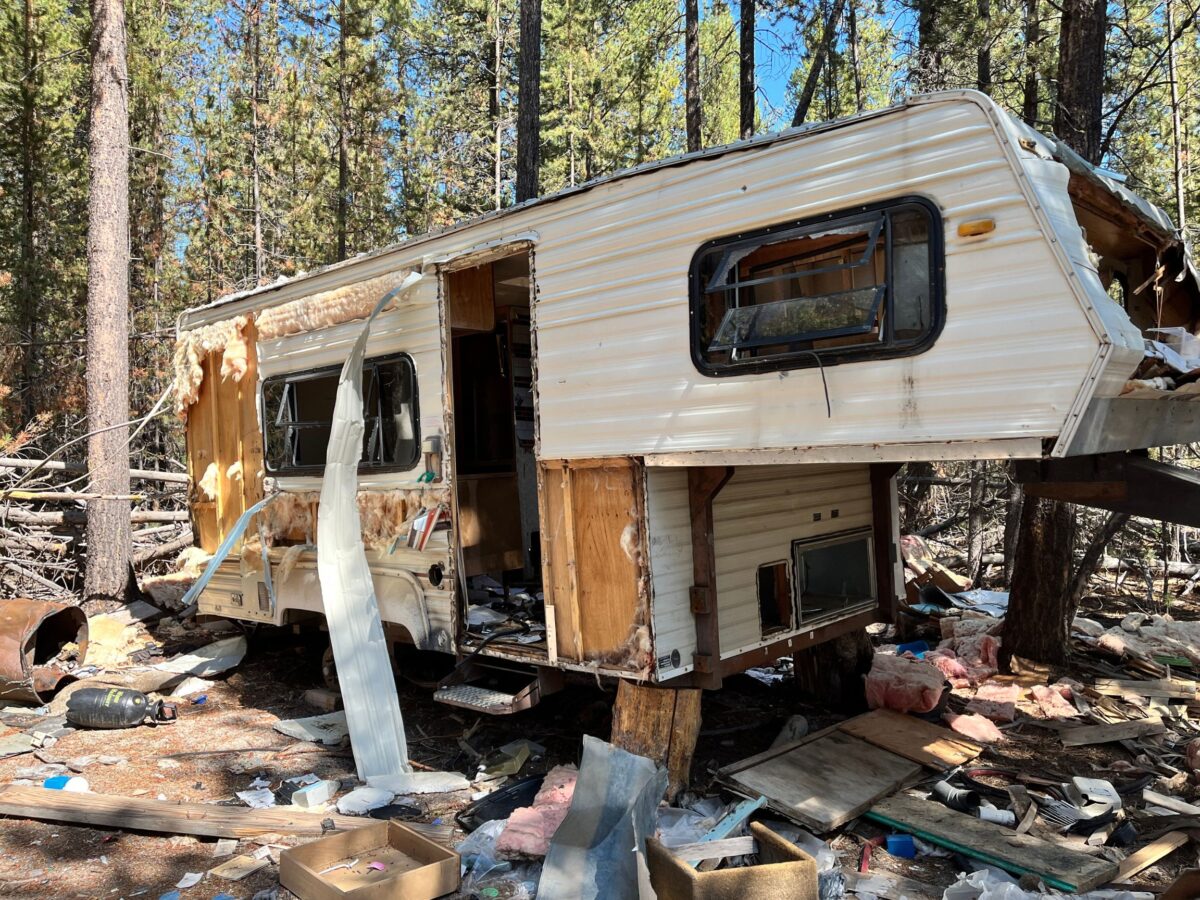Just before 2 AM, Crews from Portland Fire & Rescue responded to a fire in the Concordia Neighborhood. The initial information from our Emergency Dispatch Center was a home under construction was “fully involved” with fire near the intersection of NE 36th and NE Killingsworth. The closest responding engine, located at NE 15th and Killingsworth communicated on the radio that the fire was visible as they were leaving the station and quickly added a second alarm assignment to the fire. This has eight fire engines and four fire trucks en route to a fire before anyone has arrived. The officers of PFR are trained to add personnel to incidents early in the event there is an increased need for additional workforce to mitigate the emergency at hand and this is a perfect example of this training being placed into action.
The officer of the engine took command of the fire, communicating that there were two 3-story structures under construction fully involved with fire and communicated a concern of the fire extending to the residential homes located to the east and south of the fire. With only 500 gallons of water in the on-board tank of the fire engine, and the amount of fire present on scene, supplying the pumping engine with a water supply from a fire hydrant is critical. This engine parked across the street from the fire next to a hydrant and quickly connected to allow for a continuous water flow from their engine. The second arriving engine connected a “double header”, which is two 3” in diameter hose lines to a different fire hydrant located a block away in the attempt at providing the water needed to address the fire at hand and prevent the construction site, now nearly completely on fire, from spreading to the neighboring occupied homes. This construction site appeared to be transitioning from a single-family dwelling location into multiple smaller residential occupancies in the same footprint.

As the first two battalion chiefs arrived, they split their duties with one focused on the main fire site and the other chief, with an engine and truck, focused on protecting the occupied residence to the east of the main fire location. With the main fire site having fire impinging upon the elevated power lines, the power company was requested to respond to cut the electrical power running in the event the fire severed the lines which would have resulted in live power lines on the active fire ground, presenting a significant danger to the working crews on scene.
Crews at the primary fire site quickly went to work applying water with many larger diameter hose lines on the structures under construction now completely on fire. With an imminent concern for collapse, all personnel and emergency apparatus were placed outside of the collapse zones while applying copious amounts of water from multiple large diameter fire hoses. Fire trucks were directed to extend their ladders to provide an opportunity for an elevated fire stream if needed.
As the fire was being cooled and eliminated from the main fire site, the engine and truck crew focusing their efforts on the residence to the east began to remove any fencing between the construction site and the occupied residence. This was to eliminate a vehicle for the fire to jump to and then extend into the home. There was also direction from the battalion chief to extend fire hoses in place, focusing on the prevention of the large fire next door from extending in this occupied residence.
As crews were working from a distance with many large diameter hoses on the primary fire site, two of the three partially constructed buildings collapsed. Fortunately, the structures collapsed in a direction away from all other structures and personnel operating on the scene. With the large volume of fire, there was a concern that burning debris was going to be taken aloft, float away, and drop onto a neighboring home. There was active direction to be attentive to this possibility and the fire brands, which are these floating pieces of wood on fire, were extinguished as they landed in the neighboring trees.
Buildings in the process of construction will have quick fire spread because of the wide-open nature of the setting. This quick fire spread also allows for a quick fire suppression. Before many of the second alarm companies arrived on scene and were assigned duties in the fire suppression efforts, the main body of fire had been eliminated and now there were just small fires in a few areas. Additionally, the neighboring homes were nearly completely unaffected by the fire because of the focused efforts of crews on scene to split duties and compartmentalize the site. Without crews focusing their efforts on the neighboring homes, this large fire of the structures under construction was certain to extend and cause damage and possibly force relocation of the occupants of a single-family home.
There were no reported injuries to any fire responders. No residents in the surrounding area will be displaced. Although the power company responded and arrived on scene, there was not a need to eliminate and redirect any electricity in the elevated supply lines. The fire investigation will begin in the morning.







